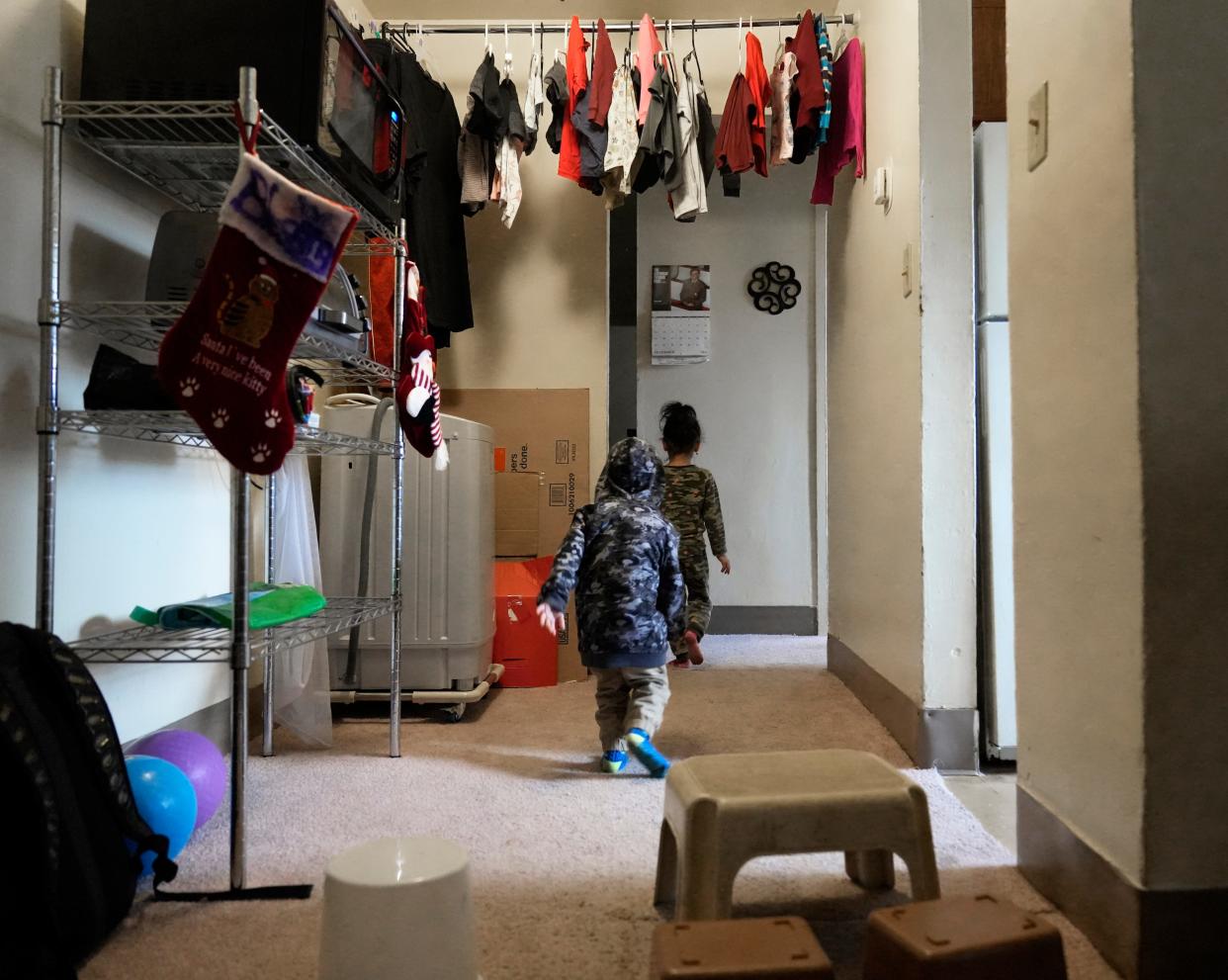Opinion: We foot bill to keep Columbus' poorest families trapped and dodging bullets daily

Vladimir Kogan is an associate professor of political science at the Ohio State University. His research focuses on state and local politics and policy.
In recent weeks, the Dispatch has reported on heart-wrenching tragedies at two Columbus apartment complexes.
In one, hundreds of residents were displaced after losing heat and water in decrepit housing towers. In another, a 13-year-old boy was tragically gunned down by a neighbor and other residents report that dodging bullets is an everyday occurrence.
Our View: Wait must end. Family, community deserve swift answers about Sinzae Reed's death
What makes both stories so outrageous is that local government policy has helped perpetuate these problems.
Both apartment complexes exist only because they are funded almost exclusively by taxpayer dollars. And the issues they face are entirely predictable — and preventable. Yet local officials continue to drag their feet.

Perhaps most depressing is that we have read this drama before.
More:Remaining Latitude Five25 residents relocating after Near East Side towers deemed unsafe
In 1991, Wall Street Journal reporter Alex Kotlowitz published "There Are No Children Here," telling the harrowing story of a family growing up in Chicago public housing. Their experience — backed up sewer drains, daily shootings — are eerily similar to what is happening in Columbus today.
Kotlowitz’s book became a national best-seller and touched an emotional nerve. Congress appointed a National Commission on Severely Distressed Public Housing and allocated billions to demolish such problematic properties.
The main lesson learned was that our public housing policies were broken, funneling low-income families into segregated neighborhoods of concentrated poverty and crime, socially disconnected from services and opportunities necessary for upward mobility.

Although public housing is now a shell of its former self, Columbus has recreated these same issues through the design of the Section 8 housing voucher program, which has largely replaced publicly owned low-income housing.
More:Section 8: What to know about the housing vouchers and discriminatory rental policies
The voucher program is administered by the Columbus Metropolitan Housing Authority and it has a fatal flaw: The agency has set a cap on the maximum amount of rent it will fund that is the same across all of Franklin County, regardless of differences in local housing costs across neighborhoods.
For example, the current payment standard for a two-bedroom unit is $1,279 per month. That is almost $100 more than the average rental price in the Hilltop 43228 ZIP code, the location of the troubled Wedgewood Village Apartments, according to the most recent Zillow data.
So, it is not surprising that landlords in the Hilltop are happy to fill their apartments with voucher recipients, whom they can charge above-market rates.
By contrast, the monthly cap is nearly $300 less than the average rent in the 43214 ZIP code, located in the much safer Clintonville neighborhood, which provides access to better schools and employment opportunities.
Low-income families with vouchers who want to move to Clintonville have to find the money to make up the difference, and very few can.
Compelling academic research has shown that adjusting voucher payments to account for differences in housing prices increases access to higher-opportunity neighborhoods. And it does so in a cost-neutral way — because the rents paid decrease in low-rent neighborhoods like the Hilltop.
Local officials are aware of this research. Indeed, Mid-Ohio Regional Planning Commission's 2020 Regional Housing Strategy specifically calls out “adjustments to voucher payment standards” as a policy lever to increase access to opportunity, yet local policymakers and the housing authority have not made this change.
Rather, local officials have focused on symbolic policies — such as passing largely unenforceable source-of-income anti-discrimination ordinances — and have allocated tens of millions in local dollars to build subsidized housing.
The number of units such construction will create is a drop in the bucket — hardly moving the needle on addressing the region’s housing affordability crisis — but please powerful interest groups, such as local building trades unions. And slumlords, who currently make excess profits off vouchers in low-rent neighborhoods, would no doubt fight the payment reform as well.
Without public outrage, mobilization, and advocacy of the kind that followed Kotlowitz’s book, nothing will change. And our region’s most-disadvantaged families will continue to be trapped in these tragic conditions, with taxpayers footing the bill.
Vladimir Kogan is an associate professor of political science at the Ohio State University. His research focuses on state and local politics and policy.
This article originally appeared on The Columbus Dispatch: What housing strategies keep poor trapped in Hilltop and Latitude Five25?

